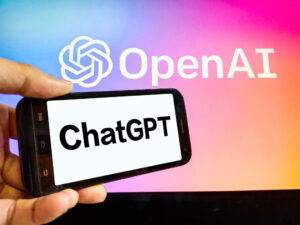Understanding the Reasoning of A.I. Chatbots such as ChatGPT and DeepSeek

OpenAI’s Enhanced ChatGPT: A New Era in AI Reasoning
Introduction to Advanced AI Systems
In September, OpenAI launched an updated version of ChatGPT that features improved reasoning capabilities for tasks related to mathematics, science, and computer programming. This latest iteration sets itself apart from earlier versions by taking the time to analyze complex problems before arriving at an answer. Unlike traditional responses, which are generated instantly, this new technology embraces a more thoughtful approach.
Performance Against Leading Systems
Shortly after its release, OpenAI announced that the reasoning technology in this new ChatGPT model had outperformed some of the top systems in the artificial intelligence industry. This milestone was evaluated through a series of tests intended to measure AI advancements. The results indicated not just improvements in accuracy but also in the depth of the reasoning process employed by the AI, showing promising potential in practical applications of the technology.
Competitors in the AI Reasoning Space
Following OpenAI’s announcement, other tech companies such as Google, Anthropic, and China’s DeepSeek have introduced similar AI reasoning technologies. This growing competition suggests a significant shift in the AI landscape, with multiple players now striving to enhance the reasoning capacities of their systems.
Understanding AI Reasoning
What Does AI Reasoning Mean?
At its core, reasoning in an AI system involves the ability to spend additional time on problem-solving. According to Dan Klein, a professor of computer science at the University of California, Berkeley, and chief technology officer of Scaled Cognition, reasoning implies that the AI engages in "extra work" after being presented with a question. This might involve breaking down complex problems into simpler parts or employing a trial-and-error approach to arrive at a solution.
How Does It Differ from Previous Versions?
The early versions of ChatGPT typically provided immediate responses to queries. In contrast, the updated reasoning systems can engage in a more prolonged thought process, which may last several seconds or even stretch into minutes before delivering an answer. This ability implies a more structured thinking process, allowing the AI to produce more nuanced and accurate solutions.
How AI Engages in Reasoning
AI reasoning encompasses several techniques that can be categorized as follows:
Problem Breakdown: The AI decomposes a complex problem into smaller, more manageable components, making it easier to tackle.
Iterative Problem Solving: The AI applies a method of solving problems through cycles of trial and error, iterating through possible solutions until it finds the most suitable one.
- Reflection on Previous Answers: The AI can evaluate its own previous responses, refining its approach based on the reasoning journey it undertakes.
Implications of Enhanced Reasoning
The improvement in reasoning capabilities raises important questions about the nature of AI intelligence. Can AI truly reason like a human? What does it mean for machines to "think"? While these systems are demonstrating advancements, it is still a topic of debate whether they are nearing genuine intelligence or simply performing sophisticated computation.
Conclusion
As AI technology continues to evolve rapidly, the advancements in reasoning capabilities mark a significant leap forward. The implications for tasks that require deep thinking and innovative problem-solving are vast and could reshape the landscape of artificial intelligence in various sectors. As this technology spreads, it remains essential to evaluate what AI can achieve and how closely it mirrors human cognitive function.






